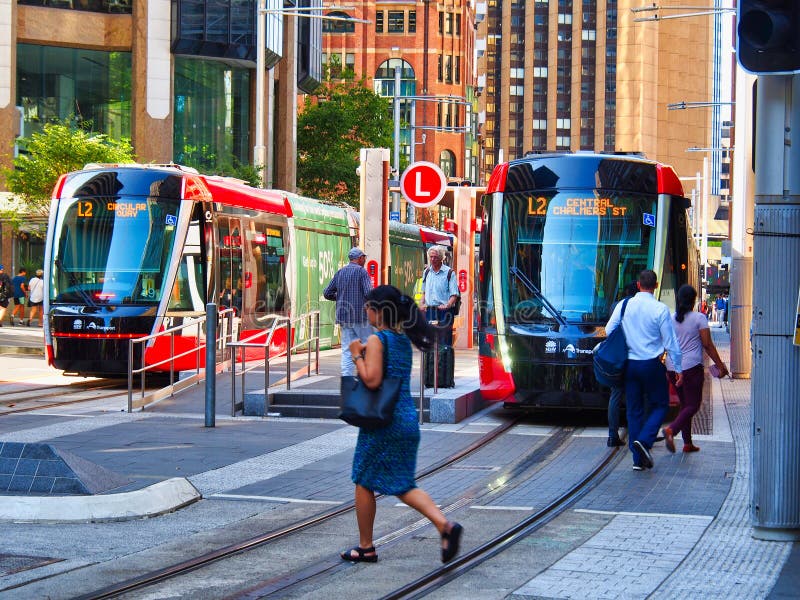Australian public transport system is a complex yet efficient network that plays a vital role in connecting millions of people across vast urban and regional landscapes. From the bustling tram lines of Melbourne to the sleek metro expansions in Sydney, the Australian public transport system has evolved into a multifaceted ecosystem designed to support the country’s growing population and its environmental aspirations. As cities expand and urban sprawl intensifies, state governments and transport authorities such as Transport for NSW and Public Transport Victoria have responded with ambitious projects aimed at improving accessibility, reducing congestion, and enhancing sustainability.
What sets the Australian public transport system apart is its diversity. Each major city has tailored its network to suit local geography, commuter culture, and future planning. For example, Melbourne boasts the world’s largest operational tram network, serving over 200 million annual passengers through a system managed by Yarra Trams. Sydney, on the other hand, is rapidly expanding its metro services, a project overseen by Sydney Metro, which aims to redefine rapid urban mobility by 2030. Brisbane is pushing forward with its Metro project, introducing high-capacity electric vehicles and dedicated busways to accommodate increasing demand and prepare the city for a more sustainable future.
Beyond city centres, the Australian public transport system stretches into regional areas through services such as V/Line in Victoria and NSW TrainLink, offering essential connections for those living outside metropolitan zones. Although these services often face limitations in frequency and coverage, they are lifelines for many rural communities. Efforts are underway to enhance these networks, with digital tools like Translink in Queensland offering real-time updates, route planning, and integrated ticketing systems to improve passenger experience and journey planning.
Technological innovation and sustainability are at the heart of Australia’s transport future. The transition to low-emission vehicles, supported by state-led policies and environmental frameworks, is reshaping public transport fleets nationwide. Canberra’s goal to achieve an all-electric bus fleet by 2040, for example, reflects a wider commitment echoed by Infrastructure Australia and transport authorities in other capitals. Cities are also investing in “green stations” and renewable energy solutions to power their operations, with projects supported by organizations such as Infrastructure Victoria focusing on long-term environmental goals.
Still, challenges remain. Infrastructure upgrades, funding allocation, and regional equity in service access are ongoing concerns. The sector also grapples with increasing expectations for digital integration and customer convenience. Entities like Bureau of Infrastructure and Transport Research Economics play a critical role in data-driven planning and performance measurement to ensure that the system continues to meet contemporary needs. Meanwhile, industry bodies like the Rail Industry Safety and Standards Board help shape regulatory standards and operational safety across all states.
In summary, the Australian public transport system is a dynamic and evolving network that reflects both the diversity and ambition of the nation. Whether through iconic trams, futuristic metros, or region-connecting rail lines, public transport remains essential to shaping Australia’s urban identity and sustainable future.
Urban Mobility Across Major Cities
Public Transport in Sydney: A Multimodal Giant
Sydney boasts one of the most comprehensive networks within the Australian public transport system. The city’s Opal card provides seamless access to trains, buses, light rail, and ferries. On an average weekday, more than 2 million trips are taken using public transport in Sydney. According to Transport for NSW, the rail network carries over 413 million passengers annually. With ongoing expansion projects such as the Sydney Metro, expected to serve over 40 stations by 2030, the city’s infrastructure is rapidly evolving.
Melbourne’s Iconic Tram System
Melbourne is home to the world’s largest operational tram network, with over 250 kilometers of track and 1,763 tram stops. Trams are a cultural and practical mainstay of the Australian public transport system in Victoria. Public Transport Victoria reports that over 203 million trips were made on trams in 2023. With 24-hour services on weekends and a free tram zone within the CBD, Melbourne effectively combines heritage with high-capacity service.
Brisbane’s Growing Transport Grid
Brisbane’s TransLink integrates bus, train, and ferry services under a unified ticketing system. In 2022, the city recorded 112 million public transport trips. The introduction of the Brisbane Metro project, which aims to carry up to 22,000 passengers per hour in each direction, is expected to reduce travel time and improve service frequency. Brisbane’s commitment to sustainable urban growth is reshaping its position in the national transport network.
Perth and Adelaide: Smaller Cities, Big Vision
While smaller than their eastern counterparts, Perth and Adelaide are investing heavily in public transport modernization. Perth’s rail system recorded over 70 million boardings in 2023, with expansion plans extending to Ellenbrook. Adelaide has rolled out a fleet of electric buses and upgraded its rail infrastructure. As components of the broader Australian public transport system, these cities reflect strategic investment in regional connectivity.
The Role of Trains, Trams, and Buses in Everyday Life
Daily Commutes and Travel Patterns
Trains, trams, and buses are integral to the daily lives of Australians. According to the Bureau of Infrastructure and Transport Research Economics (BITRE), public transport accounted for 16.3% of work trips in major cities in 2022. In Sydney and Melbourne, this figure jumps to over 24%. The Australian public transport system is essential not only for work commutes but also for school, shopping, and leisure activities, supporting millions of residents across urban and suburban areas.
Accessibility and Inclusivity
Modern vehicles and stations are increasingly designed with accessibility in mind. Over 90% of metropolitan train stations are now wheelchair accessible. Low-floor buses and audio-visual announcements are also becoming standard. This reflects a national push to make the Australian public transport system inclusive for individuals with disabilities, senior citizens, and parents with strollers.
Education and Youth Mobility
Public transport is critical for students, especially in metropolitan regions. In Victoria, around 130,000 secondary school students use public transport daily. Many states offer student concessions and free travel zones around universities and schools. The integration of digital ticketing apps ensures that younger demographics engage more easily with the system.
Environmental Benefits and Urban Congestion
Replacing private car travel with public transport significantly reduces congestion and emissions. A full bus can take 50 cars off the road. According to ClimateWorks Australia, the Australian public transport system helps cut carbon emissions by an estimated 3.9 million tonnes annually. With urban populations expected to grow by 19% over the next decade, public transport will be critical in managing congestion and air quality.
Employment and Economic Contribution
The public transport sector employs over 130,000 Australians. From operators to maintenance crews, it forms a key component of the national economy. Investments in infrastructure projects, such as the $11 billion Melbourne Metro Tunnel, also generate thousands of construction and engineering jobs. Public transport is not just a service—it’s a major economic engine.
Challenges and Innovations in Public Transport Infrastructure
Aging Infrastructure and Modern Demands
Some segments of the Australian public transport system were established in the 19th century and now struggle to meet 21st-century demands. Aging bridges, outdated signaling systems, and legacy fleet equipment continue to pose reliability issues. For instance, Melbourne’s rail system experiences an average of 200 service disruptions per month due to infrastructure failure, according to Metro Trains Melbourne.
Funding and Political Hurdles
Funding public transport remains a key issue. While the federal government allocated over $120 billion for infrastructure between 2020 and 2030, much of this is earmarked for road construction. The share dedicated to public transport varies by state, often influenced by political cycles. Inconsistent funding leads to delays in major projects like Brisbane’s Cross River Rail, originally planned for completion in 2024 and now extended to 2026.
Digital Innovations and Smart Cities
Australia is embracing smart transport solutions. Sydney and Brisbane have implemented real-time tracking apps, while Adelaide has started trials with AI-powered transport hubs. Wi-Fi availability on trains and tap-and-go payment systems have become the norm. The use of big data and AI to optimize routes and crowd management is helping to improve efficiency across the Australian public transport system.
Sustainability and Low-Emission Vehicles
Electric and hydrogen-powered buses are increasingly being rolled out. Canberra aims to transition its entire bus fleet to electric by 2040, while Victoria introduced 52 electric buses in 2023. These shifts align with national goals to reduce transport sector emissions, which currently make up 18.3% of Australia’s greenhouse gas output.
Regional Connectivity and Rural Isolation
Outside metropolitan areas, public transport is limited. In some rural parts of New South Wales and Western Australia, buses run only once or twice a week. Regional rail services like NSW TrainLink and V/Line offer long-distance travel, but coverage remains sparse. Expanding the reach of the Australian public transport system into these underserved areas remains a vital but under-addressed challenge.
Sustainability and the Future of Australian Transit
Zero-Emission Goals and Policy Frameworks
Australia is committed to net-zero emissions by 2050, and the transport sector plays a vital role in that vision. The National Electric Vehicle Strategy, launched in 2023, sets a target for 90% of new bus purchases to be electric by 2030. State governments have pledged $3.4 billion in green transport funding, further reinforcing sustainability as a core pillar of the Australian public transport system.
Integration with Cycling and Pedestrian Infrastructure
A sustainable future involves multimodal mobility. Cities like Adelaide and Perth are integrating bike-sharing systems and pedestrian corridors with transit hubs. In Melbourne, the Metro Tunnel will feature direct links to major cycling paths, promoting eco-friendly last-mile connectivity. These integrations aim to reduce car dependency and foster a healthier urban environment.
Green Stations and Renewable Energy Use
Many stations are being retrofitted with solar panels and green roofs. Sydney’s Central Station has begun using solar energy to power lighting and escalators. In Brisbane, the new Woolloongabba Metro station is designed to achieve a 6-Star Green Star rating by using recycled materials and efficient lighting. These innovations contribute to a greener Australian public transport system and inspire global best practices.
Public Awareness and Behavior Change
Government campaigns and incentives are encouraging people to choose public transport over cars. In Victoria, fare caps introduced in 2023 have boosted off-peak travel by 17%. In New South Wales, ‘Green Travel Plans’ are being implemented in workplaces and schools to encourage environmentally conscious commuting.
Innovation in Urban Planning
Future cities are being designed around transport, not traffic. Transit-Oriented Developments (TODs) are rising around train stations in Sydney and Brisbane. These high-density, walkable communities are meant to reduce travel distances and enhance livability. The Australian public transport system is central to this urban transformation, setting the foundation for more efficient, inclusive, and sustainable cities.




